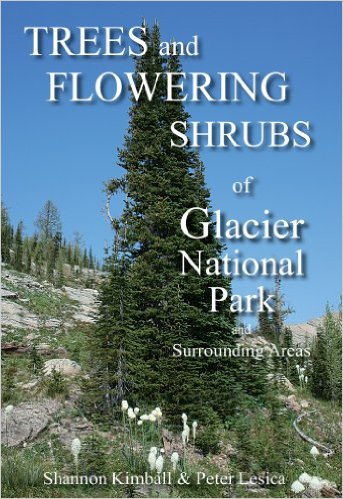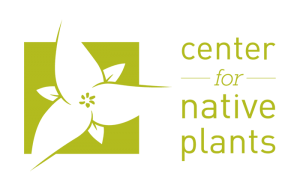For the Armchair Botanist
A book review of trees and flowering shrubs of Glacier National Park and surrounding areas.

Trees and Flowering Shrubs of Glacier National Park and Surrounding Areas by Shannon Kimball & Peter Lesica is the only Park-specific field guide to help you identify the Park’s trees and shrubs. Other plant guides for trees and shrubs reference more species and for a greater geographic region. They are also larger books. Measuring just under ¾” thick, Trees and Flowering Shrubs won’t take up as much room in your pack.
The idea for Trees and Flowering Shrubsgrew out of a need by stymied Glacier National Park employees trying to identify plants, and as a way to deepen Park tourists’ connection to the land. For any native plant lover, though, wanting a field guide written in accessible language with a proper smattering of nerdiness, this book offers a lot.
For starters, the colored images are big and, with a few exceptions, in excellent resolution. What really sets this field guide apart is the great length the authors went to capture tree images both in their entirety and natural habitat.. Capturing the full image of a tree in a dense forest is challenging. Once you start backing up to get the full image of, say, a Ponderosa Pine, you bump into another one. Or the outline of the pine gets blurred by other surrounding ones.
The book opens with brief and extremely understandable presentations that offer a base understanding about the Park’s forest: its climate and geology, types of vegetation, and the effects that disturbances, such as wildfire, pests, and disease, have on the forest’s health. Having acquired this knowledge puts the rest of the book’s information into perspective from a holistic point of view. In other words, once you acquire the bigger picture of what affects and shapes the Park’s forest, your sense of awe acquired while driving along Going to the Sun Road only deepens. It will make you want to get out of the car to see more.
Before getting into the guts of the book—plant identification—take a moment to read the extended presentation, “Tree Pests & Diseases.” Doing so will help you develop an awareness of what the forest’s health is up against and management styles and climate considerations beneficial, or not, to the longevity of the forest’s health.
Two obvious sections make up the bulk of the book: “Trees” and “Shrubs.” The “Trees” section is organized into two subsections: “Needle-leaved” and “Broad-leaved.” The “Shrubs” section is organized by flower color—brown and green, white, yellow, and pink—represented by colored tabs at the top of pages. From there, species listings from page to page become unordered. This is only a problem if you’re expecting either the scientific or family names to be in alphabetical order. The book’s robust index, however, will quickly get you to the species you’re after.
Circling back to the book’s images, in the “Trees” section, at a minimum you can observe the trees’ bark, needle- or broad-leaf shapes, cones of needle-leaved trees, and (as already mentioned) the full tree size in its natural habitat. In the “Shrubs” section, at a minimum you can observe a shrub’s flower, fruit, and leaf shape.
The detail you want and need to identify a species is all there, and more. You’ll learn species’ habitats (sun, moisture, temperature, and elevation requirements) and the general areas of the Park in which they occur. The “Needle-leaved” subsection includes commentary on pests and diseases. All species have a Notes section that includes a variety of additional detail such as interesting ways Native Americans made use of species or the types of pests and diseases to which species are prone.
Trees and Flowering Shrubs is available at amazon.com and at the Center for Native Plants located in Whitefish.
![]()
Have a landscaping project you need help with?
Contact the nursery at 406.862.4226 or complete this Customer Inquiry Form and email it or bring it into the nursery.


